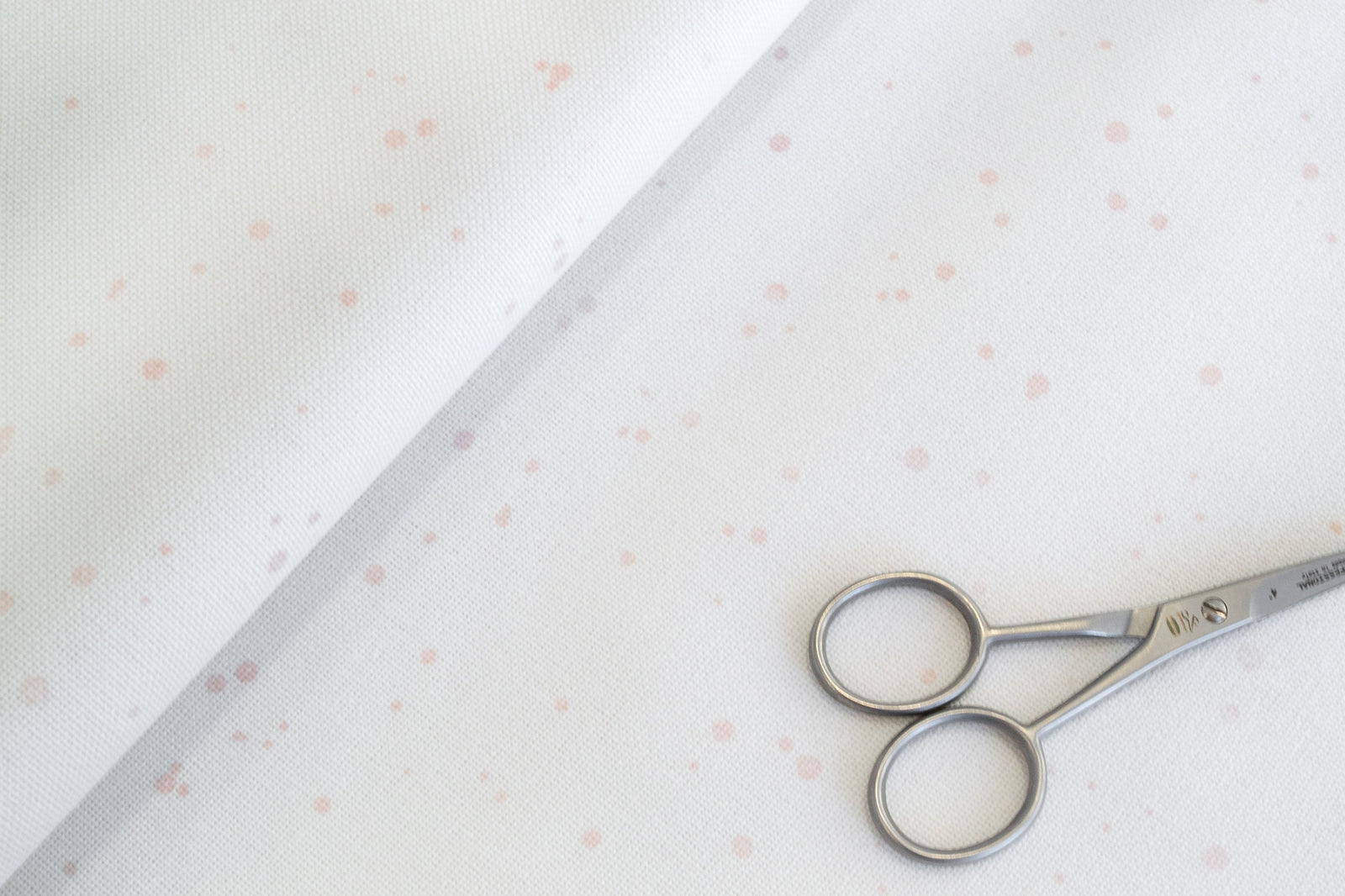The difference between Aida, Lugana and Linen lies in the fibers they are made of, the number of threads or "count" and how they are embroidered. Embroiderers often have different preferences on which fabric they like best, depending on their specific needs.
Aida fabric is made primarily of cotton and is the easiest to start with. It has a smaller thread count, such as 11, 14, 16, 18 and 20, with the most common sizes being 14, 16 and 18 ct. Its special weaving technique with distinctive embroidery squares makes counting stitches much easier. This fabric tends to be a little stiff, but it will soften when washed, which is great for embroiderers who want to embroider by hand.
Luganas or Etaminas are made of cotton or cotton blend and have higher thread counts, including 25, 28, 32 and 40. Depending on the brand, some Luganas or Etaminas are softer and others are stiffer. In addition, they have a uniform thread texture.
Linen refers to the fabric of fibers. It is very similar to the Luganas in terms of its higher thread count. However, they are more difficult to work with due to their natural appearance and slubs (thicker tufts of fibers in the fabric). Unlike Lugana, flax has strands that are thicker in some areas and thinner in others, which can make counting more difficult.
There are also linen Aida fabrics. They are Aida-type fabrics that are created using the material of linen, instead of cotton. In other words, the fabric is usually a smaller bead size and has the same appearance as Aida.

What is a fabric count?
Fabric count refers to the number of stitches per inch or centimeter. The most common fabric counts include 14, 16 and 18 for Aida cloth and 25, 28 and 32 for Lugana and Linen. Each cross stitch fabric has different counts, which affects the final size of the project.
For example, a 14 count Aida cloth. It has 14 squares per inch horizontally and vertically, or 5.5 by 1 cm / 55 squares by 10 centimeters. It is important to note that all fabrics must have the same count both horizontally and vertically, otherwise the project will be distorted. This is a common problem in lower quality fabrics.
In some graphs it may not be evident, but in others, such as those with circular, square or face shapes, it can be extremely visible. For this reason, Punto y Arte recommends not using this type of fabric and opting for respectable brands such as Zweigart or DMC, specialized in cross stitch fabrics, to guarantee quality.
Keep in mind that the higher the fabric count, the smaller your final project will be, while the lower the count, the larger it will be. If you want your project to fit within the dimensions of a specific frame, it's important to figure out what fabric count you'll need to achieve this.
 |
 |
 |

|
How to calculate the fabric measurement for a project?
To calculate the fabric measurement needed for your project, you must take into account the fabric count and the number of points on the graph. The fabric count is the number of stitches per inch or as the count increases, the project will be smaller.
-
For example, on 14 count Aida. There are 14 squares per horizontal and vertical inch, or 5.5 per 1 cm / 55 squares per 10 cm.
-
On 16 count Aida . There are 16 squares per horizontal and vertical inch, or 6.2 per 1 cm / 62 squares per 10 cm.
-
And on 18 count Aida. There are 18 squares per horizontal and vertical inch, or 7 per 1 cm / 70 squares per 10 cm.
In Lugana and Linen, 2 threads are embroidered over 2 threads, which is equivalent to:
-
Lugana or Linen 28 ct. =Aida 14,
-
Lugana or Linen 32 ct. =Aida 16,
-
Lugana or Linen 36 ct. = Aida 18.
Please note that approximately 1 inch equals 2.54 cm.
To calculate size , divide the number of stitches on the chart by the fabric count. In other words, 150 divided by 14 and to obtain the measurement in centimeters 150 divided by 5.5.
For example, if the graph is 150x150 points and you want to use:
-
Aida 14 ct. the size would be 10.71"x10.71"/27.27 x 27.27 cm.
-
If you used Aida 16 ct. it would be 9.37"x9.37"/24.19 x 24.19 cm.
-
And if you used Aida 18 ct. it would be 8.33"x8.33"/21.43 x 21.43 cm.
Don't forget to leave a margin of 5-10 cm for the frame.
The 14 count Aida cloth. It is a good option for beginners due to its square structure and the fact that it has a lower thread count and the square is quite large. The squares are easier to count and provide good coverage with 3 strands of the mouline thread. Plus, it has more space between the holes, making them easier to see and distinguish from each other.
As you gain more experience, you may consider trying Lugana fabrics or Linen fabrics. Lugana fabrics are slightly easier to handle than Linen because the fibers are more regular. Linen has an uneven structure to the thread, which can make it a little more difficult to work with.
What does it mean to embroider on 1 versus on 2?
When you embroider over 1, you go from one hole to the next. This is evident when using Aida fabric and smaller count fabrics. You will embroider over 1 hole to complete a full cross.
On higher count fabrics, you will embroider over 2. Instead of putting the needle in the next hole, you skip 1 to create your cross stitch in the second hole.
When you see 1 over 1, that means one strand of mouline over 1 hole. Most graphics are embroidered in 2 strands of mouline, 2 over 1 for Aida.
On higher counts, you will often see 2 over 2, which means embroidering 2 strands of mouline over 2 threads of the fabric.
The exception is the 25 ct Lugana fabric. Typically, embroiderers will stitch 2 over 1s on this fabric.

